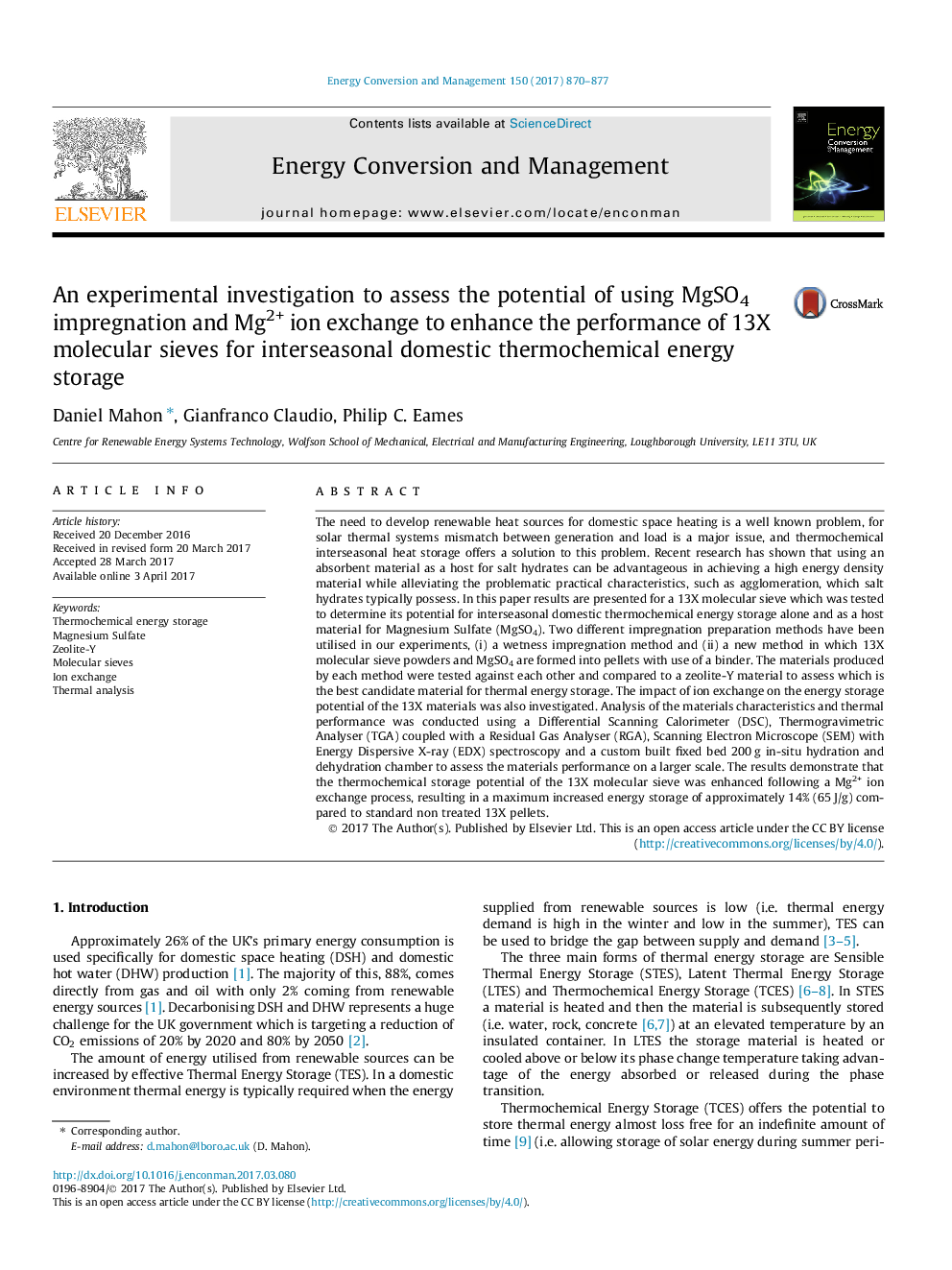| کد مقاله | کد نشریه | سال انتشار | مقاله انگلیسی | نسخه تمام متن |
|---|---|---|---|---|
| 5012292 | 1462812 | 2017 | 8 صفحه PDF | دانلود رایگان |

- Mg2+ ion exchange used to enhance the energy storage potential of 13Ã pellets.
- 13Ã molecular sieves do not allow the hydration of impregnated MgSO4.
- Zeolite-Y allows for the hydration of impregnated MgSO4.
- Ion exchange time period impacts the percentage of ion exchange completion.
The need to develop renewable heat sources for domestic space heating is a well known problem, for solar thermal systems mismatch between generation and load is a major issue, and thermochemical interseasonal heat storage offers a solution to this problem. Recent research has shown that using an absorbent material as a host for salt hydrates can be advantageous in achieving a high energy density material while alleviating the problematic practical characteristics, such as agglomeration, which salt hydrates typically possess. In this paper results are presented for a 13X molecular sieve which was tested to determine its potential for interseasonal domestic thermochemical energy storage alone and as a host material for Magnesium Sulfate (MgSO4). Two different impregnation preparation methods have been utilised in our experiments, (i) a wetness impregnation method and (ii) a new method in which 13X molecular sieve powders and MgSO4 are formed into pellets with use of a binder. The materials produced by each method were tested against each other and compared to a zeolite-Y material to assess which is the best candidate material for thermal energy storage. The impact of ion exchange on the energy storage potential of the 13X materials was also investigated. Analysis of the materials characteristics and thermal performance was conducted using a Differential Scanning Calorimeter (DSC), Thermogravimetric Analyser (TGA) coupled with a Residual Gas Analyser (RGA), Scanning Electron Microscope (SEM) with Energy Dispersive X-ray (EDX) spectroscopy and a custom built fixed bed 200Â g in-situ hydration and dehydration chamber to assess the materials performance on a larger scale. The results demonstrate that the thermochemical storage potential of the 13X molecular sieve was enhanced following a Mg2+ ion exchange process, resulting in a maximum increased energy storage of approximately 14% (65Â J/g) compared to standard non treated 13X pellets.
Journal: Energy Conversion and Management - Volume 150, 15 October 2017, Pages 870-877